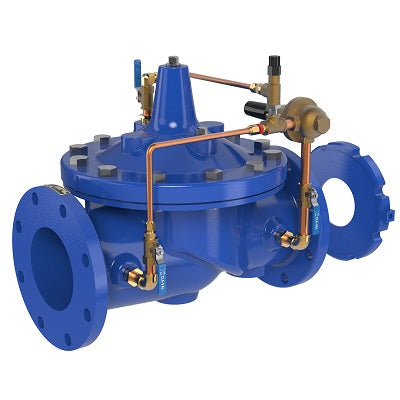
Maximize Power Cost Savings and Comfort With Advanced Building Automation Controls
In the realm of modern architecture and center monitoring, the assimilation of innovative building automation manages stands as a critical improvement. The convergence of modern technology and sustainability has actually birthed a new era where power effectiveness, comfort optimization, and functional streamlining are no more far-off goals but attainable realities. By utilizing the power of automation, buildings can adapt, respond, and develop in ways that were once inconceivable. The potential for significant energy savings and boosted comfort is not just a pledge but a possibility waiting to be met. This paradigm change in building administration holds the key to unlocking a globe where environmental conscientiousness and passenger well-being sympathetically coexist within the wall surfaces of our frameworks.
Energy Effectiveness Advantages
Power efficiency benefits can substantially lower energy consumption and operational expenses in structures. By implementing energy-efficient practices and innovations, structure proprietors and drivers can achieve substantial cost savings while additionally adding to environmental sustainability. One of the key benefits of improving power performance in buildings is the decrease of energy bills. Energy-efficient systems, such as innovative structure automation controls, can maximize the use of resources like air conditioning, home heating, and illumination, bring about reduced power costs gradually.
In addition, boosted power efficiency can prolong the life-span of building equipment and systems. By running much more efficiently, heating and cooling systems, lighting fixture, and various other building parts experience much less wear and tear, causing minimized maintenance and substitute expenses. Additionally, energy-efficient buildings usually regulate higher property values and rental prices, giving long-term financial benefits to proprietors.
Moreover, power performance can boost passenger convenience and performance. Appropriately controlled indoor settings with ideal lighting and thermal conditions produce an even more pleasurable and conducive work area, bring about improved worker satisfaction and efficiency. Overall, the power efficiency benefits connected with advanced building automation controls are diverse, incorporating cost savings, environmental stewardship, and occupant wellness.
Boosted Comfort Control
Enhancing convenience control in building environments needs an innovative assimilation of innovative automation systems for optimum occupant well-being. By making use of innovative building automation controls, facilities can customize the interior environment to meet the details requirements and preferences of occupants. control valves.
By integrating these advanced controls, structures can not just enhance convenience yet also improve energy efficiency by optimizing system procedures based on real tenancy and usage patterns. Eventually, focusing on passenger convenience with innovative automation systems leads to a much more delightful and much healthier indoor environment.
Functional Performance Improvements

Moreover, the execution of real-time monitoring and analytics devices enables building drivers to determine power inefficiencies and functional anomalies quickly. By continuously keeping track of energy use patterns and system performance metrics, modifications can be made in real-time to optimize power consumption and ensure peak functional efficiency. control valves. In addition, integrating demand feedback approaches into building automation controls can better enhance operational effectiveness by dynamically readjusting power use try this web-site based upon grid conditions and pricing signals
Indoor Climate Optimization
Reliable interior climate optimization is a basic aspect of structure automation controls, guaranteeing occupants' convenience and health while making best use of power cost savings. By utilizing advanced sensors and controls, building automation systems can continually adjust and check temperature, moisture levels, air quality, and air flow to develop an optimal indoor atmosphere. Keeping consistent and comfy conditions not just enhances passenger complete satisfaction however also increases productivity and total health.
Interior climate optimization likewise plays a crucial role in energy effectiveness. By fine-tuning cooling, air flow, and home heating systems based upon real-time information and tenancy patterns, developing automation controls can considerably minimize energy consumption - control valves. For circumstances, carrying out methods such as demand-controlled air flow and thermal zoning can assist minimize energy waste while making sure that each location of the building obtains the needed conditioning.

Sustainable Setting Production
Building automation regulates not only enhance indoor climate problems for energy performance and passenger convenience yet likewise lay the foundation for creating a sustainable setting via critical monitoring of systems and resources. By integrating advanced building automation technologies, such as sensing units, actuators, and smart software program, centers can check and readjust power usage in real-time to reduce waste and minimize their carbon footprint. These systems allow anticipating upkeep, recognizing possible issues before they rise and maximizing tools efficiency to improve long life and performance.
In addition, lasting setting production prolongs beyond energy administration to read encompass water conservation, waste reduction, and Read Full Article interior air high quality improvement. Building automation controls can manage water use, find leaks, and ensure correct waste disposal techniques, adding to overall sustainability initiatives. Additionally, by controlling and keeping an eye on ventilation and filtering systems, these modern technologies improve owner health and efficiency while lowering energy usage connected with cooling and heating operations.
Verdict
Finally, progressed building automation regulates offer considerable benefits in regards to power cost savings, convenience control, operational performance, indoor environment optimization, and creating a lasting atmosphere. By applying these controls, buildings can achieve optimum performance while decreasing energy intake and enhancing occupant convenience. It appears that the use of innovative automation innovation is vital in improving building performance and developing a more lasting future.
Energy effectiveness advantages can dramatically reduce power intake and functional prices in structures. Overall, the power efficiency advantages linked with advanced structure automation controls are complex, incorporating cost savings, environmental stewardship, and occupant well-being.
Additionally, incorporating need reaction techniques into building automation controls can further enhance functional effectiveness by dynamically changing power usage based on grid problems and prices signals.
Building automation manages not only maximize interior environment conditions for energy performance and resident comfort yet also lay the structure for producing a sustainable setting through strategic monitoring of sources and systems.In verdict, advanced structure automation manages offer significant advantages in terms of energy financial savings, convenience control, operational performance, interior environment optimization, and producing a lasting setting.
Comments on “How Control Valves Influence Power Effectiveness in Industrial Settings”